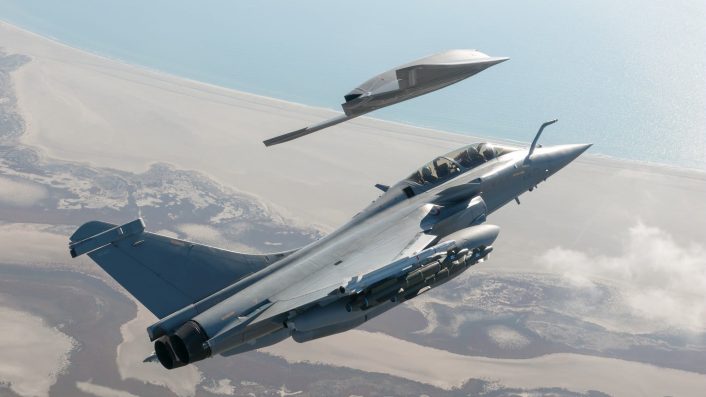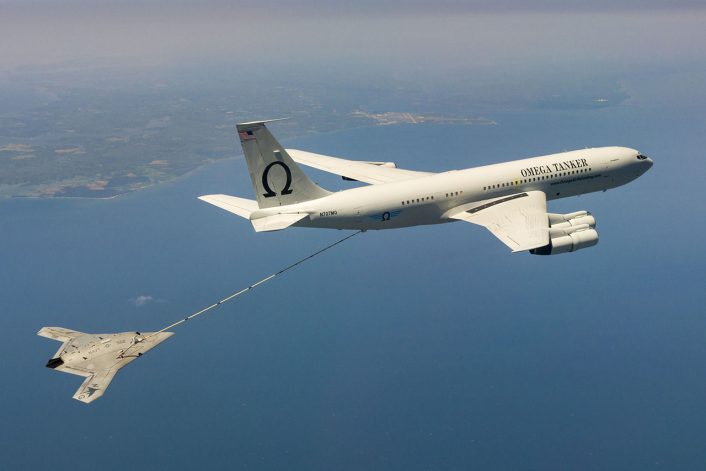France is gearing up to deploy a stealthy UCAS (Uncrewed Combat Air System) alongside the Rafale F5 by around 2033, following its program announcement in October 2024.
Stealthy UCAV for SEAD/DEAD missions alongside Rafale
A large mockup of the new UCAS, expected to enter service early in the next decade, was present at this year’s Paris Airshow as one of the highlights of the French section of the exhibition. The new combat drone, which was originally announced back in Oct. 2024, aims to ‘complement’ the Rafale’s capabilities in the future’s network centric battlefield.
As the Rafale is slated to become the only combat aircraft in both Armée de l’Air et de l’Espace and French Navy service until the FCAS (Future Combat Air System) is ready, the new ‘loyal wingman’ becomes an even more crucial asset for the future.
Neuron 2.0? Dassault UCAV breaks cover at #PAS25 pic.twitter.com/rh4Q5wjhhy
— Tim Robinson (@RAeSTimR) June 15, 2025
French officials did not release much details about the UCAS, however it said to be designed to operate alongside Rafale F5s in highly contested air space and take down adversary air defenses is SEAD/DEAD (Suppression/Destruction of Enemy Air Defenses) missions. To do this, the drone will be armed and controlled by the Rafale’s pilot.
In fact, an amendment to the French Military Programming Law in 2024 specified the Rafale F5 could include “the development of a drone to support the Rafale, based on the nEUROn UCAV demonstrator.” This drone was described to the Parliament as able to “act discreetly and quickly as an extension of the Rafale F5 (remote sensor and effector) to produce decisive network effects,” becoming a “cornerstone in the treatment of modern medium and long-range anti-aircraft systems.”
⚡️ Missile air-sol nucléaire ASN4G #dissuasion.
🛡️ Capacité #SEAD renforcée avec missile RJ10, nouveaux radar, capteurs, guerre électronique et emports pour des armes de saturation.
🤖 Horizon 2035 : le Rafale F5 couplé avec un drone de combat furtif (UCAV). pic.twitter.com/Eu7J1Rt5OS
— Armée de l’Air et de l’Espace (@Armee_de_lair) June 16, 2025
In the words of Dassault’s CEO Eric Trappier, “This stealth combat drone will contribute to the technological and operational superiority of the French Air Force by 2033. It is significant that it is being initiated today, as we mark the 60th anniversary of the Strategic Air Forces and the 90th anniversary of the Air and Space Force: in aeronautics — a highly complex field — the future has deep roots, and innovation is built on experience. Dassault Aviation and its partners are proud to serve the French Armed Forces and the French Defense Procurement Agency (DGA). Their renewed confidence honours and obliges us.”
🇫🇷 Photos de la maquette du système de drone de combat (unmanned combat air system, #UCAS) qui sera associé au #Rafale F5 de @Dassault_OnAir. #Dassault #PAS2025 pic.twitter.com/t6w9px09Ui
— OpexNews (@OpexNews) June 15, 2025
The new UCAS
The new UCAS will be roughly the size of the Mirage 2000, according to Aviation Week, and will be powered by a single Safran M88 turbofan engine – the same type that also currently powers Rafale. It will internally store a broad range of air-to-air and air-to-ground munitions and will incorporate technologies traced from Dassault’s previous nEUROn demonstrator project initiated back in 2003, such as its stealthy design and autonomous operation with ‘man-in-the-loop’ oversight.

The system will initially form a fighting pair with a single Rafale F5, although it is reported that Dassault is looking into the potential to give a single Rafale pilot control of multiple UCAS units. It aims to operate in highly contested airspace and conduct SEAD (Suppression of Enemy Air Defense)/DEAD (Destruction of Enemy Air Defense) missions.
As a ‘loyal wingman’, the UCAS is also expected to operate from France’s Charles de Gaulle aircraft carrier alongside Rafale Ms with the French Navy. It is unclear if this capability has already been integrated in the design, as the UCAS appears to be equipped with the same landing gear as the land-based Rafale B/C, rather than the one of the carrier-based Rafale M which is reinforced and equipped with a launch bar for the carrier’s catapult.

Although the new UCAS is slated to receive an inflight refueling capability, it is currently unclear whether the system will have a probe-and-drogue or flying boom refueling mechanism, both of which are compatible with the A330 MRTT (MultiRole Tanker Transport) aircraft also in service with the Armée de l’Air et de l’Espace. A probe-and-drogue would be the preferred option to operate as it would make possible for Rafale Ms with the NARANG pod to refuel the drone.
Detailed capabilities like the drone’s performance specifications, sensor suites and weapons loadouts are still under wraps, but its full-scale development (alongside that of the Rafale F5) is slated to begin in 2026-2027 and its first flight is anticipated by the end of this decade.









